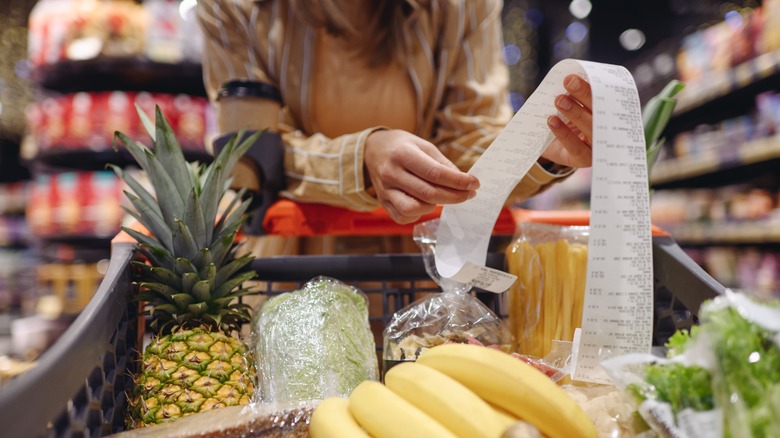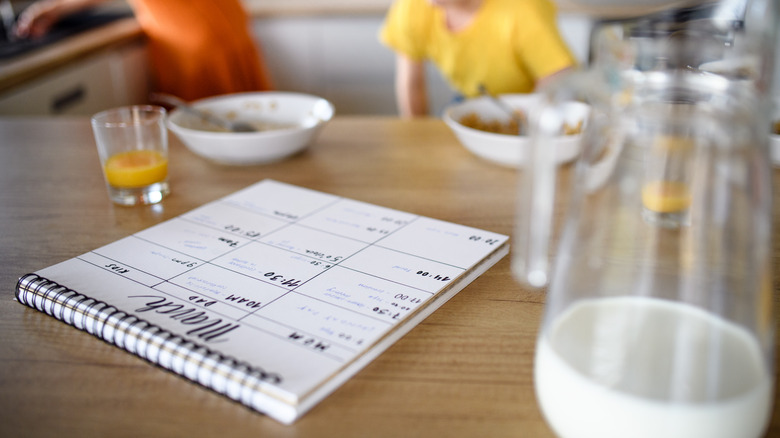The Number One Thing You Can Do To Cut Back On Grocery Bills
We may receive a commission on purchases made from links.
In the United States, the cost of food has increased by 23.6% between 2020 and 2024, and higher grocery prices have changed the way we shop. Many consumers are actively seeking ways to get more bang for their buck to feed their families without going broke. So far, one of the best ways to cut down on that grocery bill is to meal plan. Meal planning for your budget is sort of like what your favorite gym buddy does, but it's simply to ensure you're not overspending or wasting food. The amount of food waste in the United States is estimated to be between 30% to 40% of the entire food supply, meaning your household likely wastes at least some of the groceries you buy.
You can start planning by organizing your meals based on factors such as your family's schedules and dietary preferences. If you know a busy schedule is ahead, it's worth including a few slow cooker meals that you can either start the night prior or in the morning before leaving the house. You don't have to make every meal in advance and stash it in the freezer, but it may be a good idea for when time is minimal. Pre-planning a few easy grab-and-go breakfasts can help save money by preventing any last-minute fast food stops on the way to work or school. With each meal planned out, you'll be able to see which ingredients can be used for different meals on multiple days, like noodles, rice, or tortillas. Grocery shopping once per week will save you money by encouraging you to meal plan based on the ingredients you have on hand. And, fewer random trips to the store mean fewer impulse buys, especially if you're utilizing current coupons that may be available in that grocery store's app.
How to get the most out of meal planning
You can stretch your money even further with meal planning by adding in a few other elements. First, don't be afraid of leftovers. One day's breakfast sausage and eggs can be wrapped in a tortilla and frozen for future breakfast burritos, and one night's pasta can be enjoyed another night with different sides. Leftovers aren't scary, just make sure you're storing them properly. Some of our favorite food storage containers are Bovado glass containers with a bamboo lid that creates an air-tight seal.
Another way to make meal planning easier and more cost-effective is to buy in bulk. Foods like rice, legumes, and pasta are good to have in bulk as they're versatile and last a long time when stored properly. You can use foods like these as a base for meals throughout the week. A backstock of rice can be everything from a simple side dish to burrito filling, or even be made into Clint Eastwood's favorite healthy breakfast of rice and salmon. Pasta can be added to almost any combination of sauce, protein, or vegetables to create a delicious and filling meal, and the same can be said for legumes. Keeping foods like these in bulk will come in handy for meal planning, especially when you feel you've run out of ideas. Of course, meal planning can get monotonous, no matter how strategic and fun you try to make it. Make sure to plan off days if you can; sometimes we all need a random trip to Taco Bell to forget about soaring grocery prices and the necessity of meal planning.

